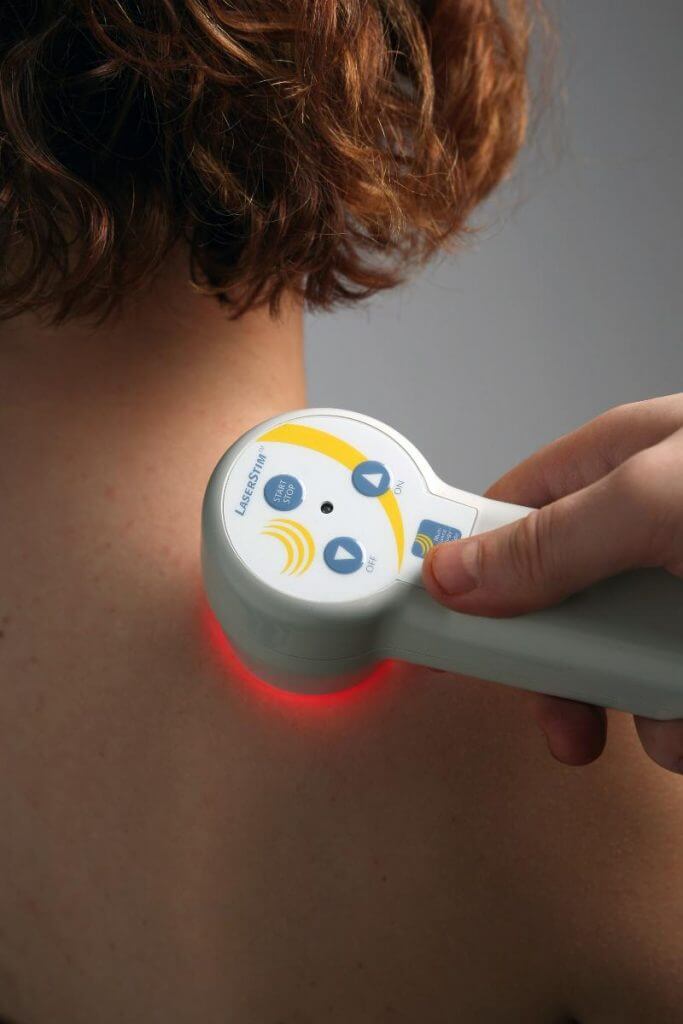
Chronic pain is pain persisting to weeks or months and is commonly associated with an underlying medical condition. Some common conditions that cause chronic pain are inflammation of the joints such as arthritis or injury, bursitis, carpal tunnel syndrome, and fibromyalgia.
Chronic pain can become quite problematic and disbaling for a person who has it. Everyday activities like walking, sitting and sleep can be affected when chronic pain persists.
Medical doctors often prescribe pain medications to try to reduce pain. Recent studies suggest an alternative intervention with the use of cold laser therapy to treat chronic pain. Cold laser therapy is low-intensity light therapy that stimulates healing while using low levels of light and decreases the need for pain medication.
It is called “cold” laser therapy because the low levels of light aren’t enough to heat your body’s tissue. The level of light is small when compared to other forms of laser therapy, such as those used to destroy tumors and coagulate tissue. Cold laser therapy can stimulate all cell types, including muscle, cartilage, ligament, and nerves.
This approach is used in clinical practice for about four decades. In 1916, Albert Einstein theorized Light Amplification through Stimulated Emission of Radiation or LASER. In 1967, Professor Andre Mester began using low power lasers in medicine. Dr. Mester is recognized by many as the grandfather of laser therapy.
Cold laser therapy is also called Low-Level Laser Therapy (LLLT). Its mechanism of action uses various wavelengths. The light energy goes through the skin and directly targets the specific area. The light can penetrate 2-5 centimeters down the tissue and creates a physiological reaction. Researchers have not clearly define how it works. Some hypothesized that low-level laser increases levels of nitric oxide that promote vasodilation thus produces better circulation and healing. Other data suggests an increase in endorphin production. Nonetheless, LLLT demonstrates an analgesic effect on the body.
Cold laser therapy is a non-invasive procedure and can be done in a clinical setting. A chiropractor can perform it.
A handheld device is set close to the affected area. A laser light radiates through the skin where it is absorbed. The treatment is done for 2 to 10 minutes since it is non-invasive, with no pain or any side effect after the therapy.
Cold laser therapy does not apply to pregnant women, cancer, and hypothyroidism patients. The laser must not expose directly to the eyes as it can cause damage to the eyes.
Sources:
https://www.mayoclinic.org/symptoms/joint-pain/basics/when-to-see-doctor/sym-20050668